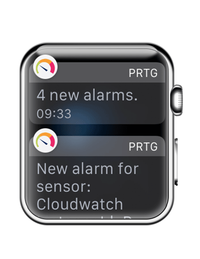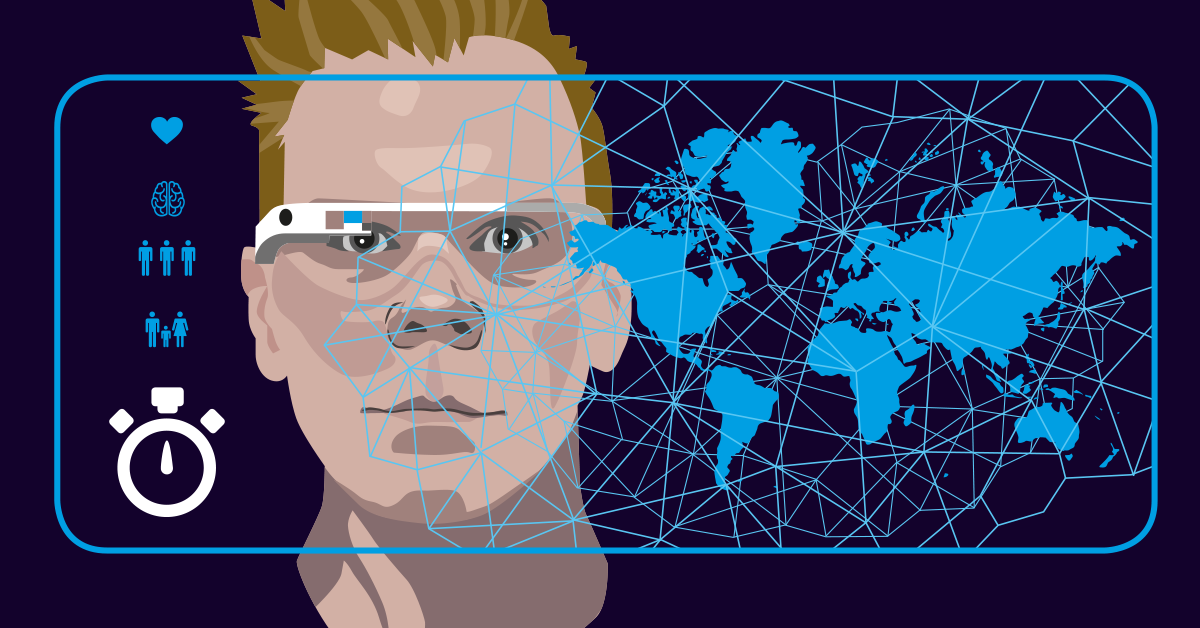As system administrators, IT architects and ninja network admins we understand one staple of the human experience more so than our brethren in other parts of the enterprise, time.
Time, you know? Uptime, planned downtime, system maintenance time, failover clusters, throughput, upload, download, throttled, backups, recoveries, everything in the life of an IT professional involves time and time commitments.
For this installment of our 'connected' blog series, I'd like to explore what happens when our physical bodies and digital relationships meet the precision of our ubiquitous system clocks. Let's try to unpack the mass rewiring of our brains, by digging deep into a global phenomenon I refer to as "Temporal Abdication" or "Time Collapse" for short.
Time Collapse 
What is "time collapse"? Regardless of where I travel in the world, the age, influence or skill level of the audience I'm presenting to, or the industry of the business for which I'm consulting, one thing has held true for close to five years; people are losing their relationship to time.
No, I'm not talking about when you walk in a room and forget why you're there, or it's cyborg cousin, opening a new tab on your browser and not remembering why.
Neither am I talking about the way social networks and Youtube transports our minds into the rabbit hole of missing hours.
The time collapse that I am talking about is the systematic remapping of our relationship with time.
You might have a heightened sensitivity to schedules, a preference to understand the systematic order of things, the need to observe or find patterns in randomness. You may feel rushed or at a complete loss with no external cause.
As technology continues to remap our relationships, bodies, families, and society we need to look beyond the devices and look to the root-cause of this rewiring.
All Technology Is A Time Machine
Let's take pop culture; time is collapsing off the systems and people everywhere you look! The onslaught of 90's TV shows being brought back and the Hollywood blockbuster films that are telling the stories of historic events that are less than a few years old, "Snowden," "Deepwater Horizon" "Spotlight." If our cultural media appetite didn't keep us guessing what year it is, on-demand media will confuse you even more.
A 20-year-old in 2018 can listen to music from any decade, on demand at any time, anywhere. That same millennial can binge-watch every episode of "Mash," "Welcome Back Kotter" and "Maude." When not binging on decades of media, you can consume an entire season of a current release in a single sitting and use AI to skip the intros.
We don't wait for a specific day of the week to satisfy our entertainment as we did in the 50 years between 1940-1990. Tuesday nights to watch "Happy Days," Saturday morning cartoons or "60 minutes" on Sunday with your family. Heck, why twiddle your thumbs waiting for your favorite animated holiday classics, watch it now, on the train, in the dead of summer.
It's common for many audio-book listeners, video watchers, and podcast audience members to listen to their shows on double, triple or even half speed.
Retailers are permanently having specials, sales, and one-time offers while automation allows things to be shipped to you before they run out, or instantly, like Amazon Prime, the 1-hour delivery service, which in combination with smart homes will allow the delivery person into your kitchen to put away groceries!
Your Mac or PC will install updates while it's sleeping, it's called "power nap", and your Apple watch has a module called "time travel" allowing you to turn the digital crown and observe elements of your life in the past or future!
When Everything Happens At Once Or On Demand, Time Becomes Irrelevant
 Many smartphones are full of alarms reminding people to leave for work, call a friend or take a shower. Our reminders, to-do lists and notes often reference things that we should just have a contextual reason to do, yet we find ourselves asking Siri to remind us to eat dinner at 5pm.
Many smartphones are full of alarms reminding people to leave for work, call a friend or take a shower. Our reminders, to-do lists and notes often reference things that we should just have a contextual reason to do, yet we find ourselves asking Siri to remind us to eat dinner at 5pm.
To understand how this phenomenon has come to be, we have to look at what is rewiring our brains. For close to a decade almost a billion people have been carrying around a smartphone. I'm not going to blame the smartphone or make this an anti-technology rant, instead, let us observe what smartphones do to our cognition. Smartphones open up your life to be accessible to anyone, anywhere, at any time. This is creating an omnipresence awareness in our relationship with time.
Each year for the past decade the inputs to your attention have increased exponentially. Software requesting your attention, people reaching out to you on different apps, systems requesting you to approve or deny something. All in an attempt for you to save time.
People will share with me how busy they are. Just log into LinkedIn, everyone is busy, or try to have a conversation that doesn't include the word busy, I seriously dare you. Have a conversation that doesn't have the word busy.
Navigating life in a post-time-society is challenging and confusing. When we are not noticing rampant coincidence or comparing notes on the latest micro-singularities - you know micros-singularities, those global events that everyone talks about for an hour and then can't remember the next day - we are racing to our next meeting or to a quiet room to feed our screaming introvert!
Strategies To Put Time Back Into Our Lives And Systems
I teach these strategies in a workshop on designing solutions:
- Temporal Bias Elimination
- Alternate Time Scaling
- Long-term Thinking
Temporal Bias Elimination
Much of our awareness of time loss can be found in the relentless nature of the updates that come from systems. The assaults on our moment, letting us know something is no longer true. Dwindling percentages on our phone batteries, the time remaining for downloads. Dates, times and feedback count in social media and the news.
Restoring balance from the mountains of useless feedback takes a full-time admin just to manage the alert settings on the connected devices in your life.
Our phone battery is a prime example of something that's stressing people out. If you're one of the countless people who keep the numeric percentage on, turn it off, you will suffer some uneasiness for a day, then you'll notice a bit more calm.
Next tip to eliminate time bias: Use the web without looking at the time, dates, comments or view counts. It may sound odd but the mountains of data that help you evaluate how to spend your time, actually contribute to your stress.
There are chrome plugins to block out these metrics, and you'll find without relevance for how important something is, you'll feel more at ease consuming it. Remember, it's a picture of your ex at a party, not a gallon of milk about to spoil, ignore the date.
Alternate Time Scaling 
There are many other clocks in the world you can refer to outside of the chronological global time system we adhere to for modernity.
Sunrise and sundown is a period that stands outside of the numeric hour. The lunar calendar is pretty cool at looking at time through a seven-day cycle, and the equinox and solstice cycles cut our year into quarters.
Spend a few weeks living with a new clock outside of the one strapped to your wrist or the wall.
Long-term Thinking
Many of our past challenges don't look so crazy when we recall them. No problem was that big of a deal with enough hindsight.
When possible consider your life in three months. Three months doesn't seem like that long, but in reality three months is a significant amount of time.
Reading books on history, studying nature or researching the origins of anything can contribute to your well-being by shaping your long-term thinking muscles!
Long-term thinking falls into three categories.
- Less than 100 years
- More than 1,000 years
- 10,000 and beyond
Consider everything you put in your brain each day through this filter. If a majority of the content you're consuming is about things less than 100 years old, you're going to be stressed out. Remember that your entire world and the world of everyone around has been informed by the last 100 years.
Items that are more than 1,000 years old but less than 10,000 years old are interesting and sometimes hard to even understand as they live outside of our comprehension. Life in 1018 had many of the things we take for granted today, cities, early transportation, religion, theater, families, jobs, yet, how people processed life 1,000 years ago, wouldn't make sense to you at all.
Items that are 10,000 years old or greater are where your greatest sense of peace will come from, to grasp 10,000-year thinking investigate an organization called "The LongNow."
The Longnow offers blogs, books, videos and simple strategies like adding a "0" in front of the year "02018" to start to adjust your thinking to these larger spans of existence.
Wait, what does all this have to do with connected bodies or families? It's simple, your relationship with your body and family, before digital technology, was mediated through time.
Time was the interface for the "system" of your life. All the value you gave to the world before 2005 came from your ability to have time and understand it through the lens of your own perception of it.
You weren't influenced, rewired or drawn to the relentless possibilities and lost opportunities. You were living day-to-day.
So as you head off to your next meeting, enjoy for a moment the ways your sense of time has been challenged, wasted or informed as you read this blog.
Maybe in a world where everything is possible, it's time to start focusing on making only a few things likely.
Place yourself in airplane mode.
 Published by
Published by 











